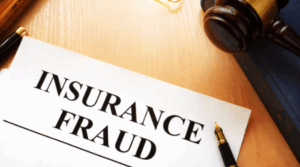
For adjusters, the challenge isn’t just handling the volume of claims—it’s separating genuine losses from exaggerated or outright fraudulent ones. Missing the signs can mean millions in unnecessary payouts, while catching them early can protect carriers, maintain trust, and help keep premiums under control.
Why Insurance Fraud Surges After Disasters and Downturns
When major hurricanes, wildfires, or floods strike, insurers see sharp increases in both property and casualty claims. Similarly, during economic downturns, individuals under financial strain may be more tempted to exaggerate injuries or losses to access payouts.
There are two main types of fraud, often referred to as soft fraud and hard fraud. Soft fraud involves policyholders exaggerating legitimate claims or misreporting information for financial gain, while hard fraud refers to deliberate acts like staging accidents or arson to commit insurance fraud.
Insurance fraud occurs in many types of insurance, including property, health, life, and workers compensation insurance and can take many forms such as:
- Inflating the value of damaged property.
- Submitting duplicate or staged medical claims.
- Claiming injuries unrelated to an accident.
- Organizing staged accidents to collect payouts.
- Submitting false information or false or misleading information to obtain coverage or benefits.
- Filing fraudulent claims for property claims, health insurance, or workers compensation.
The common denominator? Bad actors banking on overburdened adjusters to miss the warning signs.
Red Flags of Fraudulent Claims
As fraud evolves, adjusters need to stay sharp. Here’s are some red flags that often point to potential fraud:
- Inconsistent or vague claimant statements – Changing details or unclear timelines can signal fabrication.
- Pre-existing damage – “New” property damage that doesn’t align with the event in question.
- Exaggerated injuries – Complaints that don’t match medical findings or require excessive treatment.
- Frequent claimants – Individuals with a history of multiple claims in a short time span.
- Billing irregularities – Inflated invoices, duplicate bills, or treatment at facilities known for questionable practices.
While none of these factors alone proves fraud, patterns of behavior across multiple claims often point to deeper issues.
How INTERTEL Helps Catch Insurance Fraud Early
INTERTEL specializes in helping carriers and adjusters detect fraud before it drives up costs. By combining your field investigations with our advanced database analytics, INTERTEL helps adjustors identify discrepancies, patterns, and connections that might otherwise go unnoticed.
Here’s how we do it:
- Medical Canvassing uncovers undisclosed treatment histories or pre-existing conditions that could contradict reported injuries.
- Social Canvassing reviews publicly available information to identify inconsistencies in reported limitations or activities.
By layering these strategies, INTERTEL empowers adjusters with actionable intelligence that helps close cases faster and with greater confidence.
Staying Ahead of Insurance Fraud
Bad actors are becoming more sophisticated, but adjusters don’t have to fight the battle alone. With the right investigative tools, red flags can be spotted early, fraudulent activity contained, and legitimate claimants served quickly and fairly.
As we move through 2025, insurers who invest in proactive fraud detection will not only save money but also strengthen their reputations as diligent, trustworthy carriers.
Fraud may be inevitable, but losses from fraud don’t have to be. By knowing the warning signs and leveraging INTERTEL’s proven investigative strategies, adjusters can protect their carriers—and the integrity of the claims process—when it matters most.


